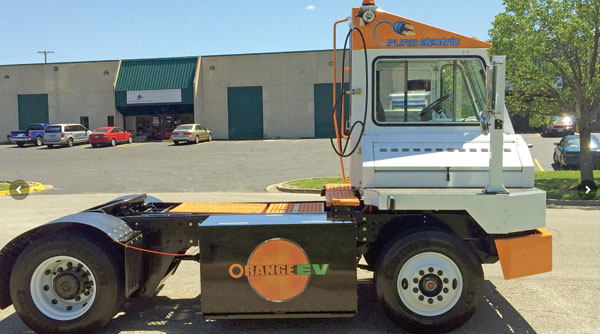Electric Trucks Make Inroads in Shorthaul Applications

This story appears in the May 15 print edition of Equipment & Maintenance Update, a supplement to Transport Topics.
Today, the use of electric trucks is confined mostly to niche specialty and shorthaul operations, but the advances made in those applications could carry over to the longhaul Class 8 market.
“As we see the evolution and adoption of electric technology in light duty, we expect to see the applications in heavy duty,” said Patrick Couch, vice president of technical services for Gladstein, Neandross & Associates, a consulting firm specializing in alternative fuel applications.
Robert Braswell, acting executive director of American Trucking Associations’ Technology & Maintenance Council, noted that there is more electrification in smaller trucks, “but we can learn from that.”
BEST OF MAY E&MU: More stories, columns
The fully electric, battery-powered Fuso eCanter Class 4 medium-duty cabover truck will launch this fall in Europe, the United States and Japan. The truck produces no tailpipe emissions and operates with nearly zero noise, said Jecka Glasman, CEO of Mitsubishi Fuso Truck of Amer- ica, based in Logan Township, N.J.
“In urban environments, where air pollution and idling noise both present problems for the residents, the Fuso eCanter can have a significant impact on quality of life,” Glasman said, adding that testing has shown that the vehicle can operate at a lower overall cost than its diesel counterpart.
Wrightspeed, a manufacturer of electric powertrains, has focused on the refuse truck market. The electric powertrains plug in to recharge overnight, and the additional power allows a truck to go about twice as far as on a tank of diesel fuel, said Arlan Purdy, product manager for Wrightspeed. “You’re getting the fantastic energy density of fossil fuels and the clean power of electric motors where it is needed,” he said. “Electric motors are fantastically good for low-speed power, and you have the upper end of regenerative braking.”
Orange EV, based in Kansas City, Mo., offers pure electric terminal trucks, which can reduce fuel costs and eliminate tailpipe emissions. Reducing emissions can be particularly important in areas within designated nonattainment areas, Chief Commercial Officer Mike Saxton said.
BYD makes a Class 8 battery-electric vehicle with 100 miles of range that is suited for shorthaul or drayage operations, said Andy Swanton, vice president of truck sales for BYD, whose North American headquarters is in Los Angeles. “It isn’t suited for a longhaul or linehaul application, but it is suited for a regional application,” he said. “There are other near-term applications with the 100-mile range for high-volume, beverage and grocery applications.”
Peterbilt Motors Co. and its strategic partners are investigating all-electric powertrains for two different port drayage and urban refuse applications. “These units typically operate in some of the most heavily populated, highest-congested areas of the country,” said Bill Kahn, principal engineer for Peterbilt, a unit of Paccar Inc.
TransPower has deployed nine all-electric shorthaul semi-trucks and five on- and off-road yard tractors, said Joshua Goldman, vice president of business development for the California-based company. Over the next two years, it plans to produce 30 more vehicles, most of which will be battery-electric.



